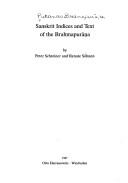| Listing 1 - 10 of 119 | << page >> |
Sort by
|

ISBN: 3486530712 3486530615 Year: 1986 Volume: 22 Publisher: München : R. Oldenbourg,
Abstract | Keywords | Export | Availability | Bookmark
 Loading...
Loading...Choose an application
- Reference Manager
- EndNote
- RefWorks (Direct export to RefWorks)
Byzantine Empire --- Empire byzantin --- Study and teaching --- Civilization --- History --- Etude et enseignement --- Civilisation --- Histoire --- 949.5 --- Geschiedenis van Byzantium en Griekenland --- 949.5 Geschiedenis van Byzantium en Griekenland --- 949.5 History of Byzantine Empire and Greece --- History of Byzantine Empire and Greece
Book
ISBN: 3486530720 9783486530728 Year: 1994 Volume: 22 Publisher: München: Oldenbourg,
Abstract | Keywords | Export | Availability | Bookmark
 Loading...
Loading...Choose an application
- Reference Manager
- EndNote
- RefWorks (Direct export to RefWorks)
Byzantine Empire --- Empire byzantin --- Civilization --- History --- Study and teaching --- Civilisation --- Histoire --- Etude et enseignement --- Byzance --- --Byzance --- --Byzantine Empire
Book
ISBN: 8821006379 9788821006371 Year: 1991 Volume: 344 Publisher: Città del Vaticano: Biblioteca apostolica Vaticana,
Abstract | Keywords | Export | Availability | Bookmark
 Loading...
Loading...Choose an application
- Reference Manager
- EndNote
- RefWorks (Direct export to RefWorks)
Manuscripts, Greek --- Catalogs. --- 091 <456.31> --- 091 =75 --- 949.5.04 --- -#GOSA:XI.ME.M --- 949.35 --- Greek manuscripts --- Greek language --- Greek philology --- Handschriftenkunde. Handschriftencatalogi--Vaticaanstad. Kerkelijke Staat --- Handschriftenkunde. Handschriftencatalogi--Grieks --- Geschiedenis van Byzantium: Griekse en Latijnse staten--(1204-1453) --- Catalogs --- History Luxembourg --- Biblioteca apostolica vaticana --- -Apostolic Vatican Library --- BAV --- Biblioteca vaticana --- Bibliotheca Apostolica Vaticana --- Bibliotheca Vaticana --- Bibliothek des Vatikans --- Bibliothèque apostolique vaticane --- Bibliothèque du Vatican --- Bibliothèque vaticane --- Bybliotheca Vaticana --- Sifriyat ha-Ṿaṭiḳan --- Vatican Apostolic Library --- Vatican. --- Vatican City. --- Vatican Library --- Vatikanische Bibliothek --- Vatikanska apostolicheska biblioteka --- Vatikanska biblioteka --- Vatikanská knihovna --- ספריה האפוסטולית בואטיקו --- ספריית הוותיקן --- Byzantine Empire --- -Byzantine Empire --- -History --- -Sources --- Commerce --- -Manuscripts --- -Catalogs --- Economic conditions --- History --- Sources. --- Manuscripts --- 949.5.04 Geschiedenis van Byzantium: Griekse en Latijnse staten--(1204-1453) --- 091 =75 Handschriftenkunde. Handschriftencatalogi--Grieks --- 091 <456.31> Handschriftenkunde. Handschriftencatalogi--Vaticaanstad. Kerkelijke Staat --- -Byzantium (Empire) --- Vizantii︠a︡ --- Bajo Imperio --- Bizancjum --- Byzantinē Autokratoria --- Vyzantinon Kratos --- Vyzantinē Autokratoria --- Impero bizantino --- Bizantia --- #GOSA:XI.ME.M --- Byzantium (Empire) --- Biblioteca Apostolica Vaticana --- Apostolic Vatican Library --- Vatican. Biblioteca vaticana --- Vatican City. Apostolic Vatican Library --- Vatican City. Biblioteca apostolica vaticana --- Vatican City. Biblioteca vaticana --- Vatican City. Bibliotheca Vaticana --- Vatican City. Vatican Apostolic Library --- Vatican City. Vatican Library --- Manuscripts, Greek - Vatican City - Catalogs. --- Byzance --- Conditions economiques --- Sources

ISSN: 09319158 ISBN: 3447027134 9783447027137 Year: 1987 Volume: 1 Publisher: Wiesbaden: Harrassowitz,
Abstract | Keywords | Export | Availability | Bookmark
 Loading...
Loading...Choose an application
- Reference Manager
- EndNote
- RefWorks (Direct export to RefWorks)

ISBN: 3700102062 3700101015 370010295X 9783700102953 9783700101017 9783700102069 Year: 1979 Volume: 12/1-3 Publisher: Wien: Österreichische Akademie der Wissenschaften,
Abstract | Keywords | Export | Availability | Bookmark
 Loading...
Loading...Choose an application
- Reference Manager
- EndNote
- RefWorks (Direct export to RefWorks)
Byzantine Empire --- History --- Sources. --- -Byzantium (Empire) --- Vizantii︠a︡ --- Bajo Imperio --- Bizancjum --- Byzantinē Autokratoria --- Vyzantinon Kratos --- Vyzantinē Autokratoria --- Impero bizantino --- Bizantia --- -Sources --- Empire byzantin --- Sources --- Histoire --- -History --- -Bajo Imperio --- Byzantium (Empire)
Book
ISBN: 9783486577501 3486577506 3486701096 Year: 2008 Volume: 22 Publisher: Munchen: Oldenbourg,
Abstract | Keywords | Export | Availability | Bookmark
 Loading...
Loading...Choose an application
- Reference Manager
- EndNote
- RefWorks (Direct export to RefWorks)
Book
ISBN: 9783406508646 3406508642 Year: 2007 Publisher: München: Beck,
Abstract | Keywords | Export | Availability | Bookmark
 Loading...
Loading...Choose an application
- Reference Manager
- EndNote
- RefWorks (Direct export to RefWorks)
Archaeology - Turkey - Istanbul --- Istanbul (Turkey) - History - To 1453 --- Archaeology --- Istanbul (Turkey) --- History
Book
ISBN: 3830928017 9783830928010 3830978014 Year: 2012 Publisher: Münster: Waxmann,
Abstract | Keywords | Export | Availability | Bookmark
 Loading...
Loading...Choose an application
- Reference Manager
- EndNote
- RefWorks (Direct export to RefWorks)
Book
Year: 1967 Publisher: München: Universität München. Institut für Byzantinistik und neugriechische Philologie,
Abstract | Keywords | Export | Availability | Bookmark
 Loading...
Loading...Choose an application
- Reference Manager
- EndNote
- RefWorks (Direct export to RefWorks)
Book
ISBN: 3458700439 9783458700432 Year: 2013 Publisher: Berlin: Verlag der Weltreligionen,
Abstract | Keywords | Export | Availability | Bookmark
 Loading...
Loading...Choose an application
- Reference Manager
- EndNote
- RefWorks (Direct export to RefWorks)
Purana (Sanskrit für »alt«) ist eine der fruchtbarsten Gattungen heiliger Texte im Hinduismus, die sich in Kontinuität zum Epos sieht. In nachvedischer Zeit entstanden etwa zwischen 300 und 1500 n. Chr. zahllose dieser »Schriften« (sie wurden jahrhundertelang von Barden vorgetragen und nur mündlich tradiert), von denen achtzehn als Hauptpuranas angesehen werden. Eines der ältesten und auch das »klassischste« ist das Visnupurana, weil es der antiken Definition eines Purana durch fünf Themenbereiche am ehesten entspricht: (Welt-)Entstehung, Neuschöpfung, Manu-Epochen, Geschlechterfolgen und dazu überlieferte Ereignisse. Wie der Name Visnupurana schon andeutet, ist Visnu darin die Gottheit, deren Rolle bei der Erschaffung und in der Geschichte der Welt episodisch dargestellt und theologisch begründet wird. Er ist der Adressat zahlreicher hymnischer Gebete. Didaktische Teile stehen neben Erzählungen von Episoden, die auch unterhaltsam oder erbaulich sein können. In den ersten beiden von sechs Teilen überwiegen Kosmogonie und Kosmographie, der dritte belehrt über rechtes Verhalten, es folgt eine Chronik der Stammbäume urzeitlicher Seher und Herrscherhäuser. Ausführlich wird die Lebensgeschichte Krsnas im fünften Teil berichtet, bevor abschließend das Ende der Welt thematisiert und dabei der erlösende Aspekt spiritueller Weltabwendung betont wird.
| Listing 1 - 10 of 119 | << page >> |
Sort by
|

 Search
Search Feedback
Feedback About UniCat
About UniCat  Help
Help News
News